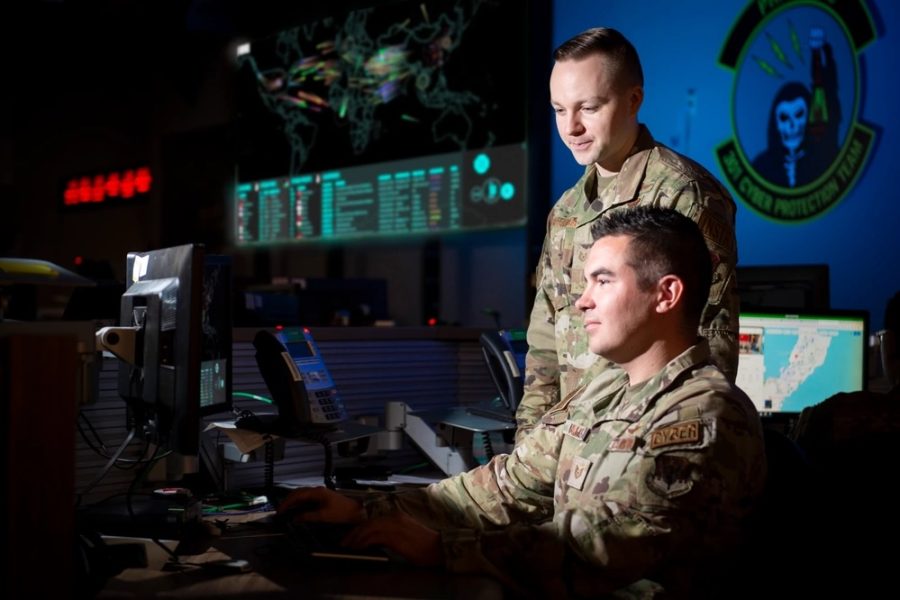Within the next nine months, the Air Force expects to have warrant officers in its ranks for the first time since the 1980s.
“We’re focused on making it work and making it work quickly, because we don’t have time to waste,” Alex Wagner, assistant secretary of the Air Force for manpower and reserve affairs, said April 9 at the Association of Defense Communities’ National Summit.
“The first warrant officers are going to be pinning on by January of next year, and we’re starting our training course some time this fall,” he added.
Wagner’s comments come about two months after Air Force Chief of Staff Gen. David Allvin announced the service will bring back warrant officers in the information technology and cyber career fields in a bid to retain highly-skilled technical specialists. The Air Force and Space Force are the only military services not to include warrant officers, who fill technical rather than leadership functions in the other military branches.
The move to resurrect warrant officers in the Air Force came amid a greater push to prepare for a possible conflict with China, Wagner said.
“One element of that was making sure we had the right type of talent,” he said. “We saw a challenge both on the retention side and on the attraction side, specifically with regard to cyber and to software and [IT].”
The issue was leadership development: the Air Force develops its officer and enlisted corps as if each of them might serve as the next service chief of senior enlisted leader, Wagner said. That requires attending leadership courses and serving in leadership roles, which can take time away from their fast-moving fields.
“With perishable skills, like cyber, like IT, where the technology is moving so rapidly, folks who are experts in that can’t afford to be sent off to a leadership course for eight or nine months,” he said.
Air Force Secretary Frank Kendall addressed a similar concern at the AFA Warfare Symposium in February.
“Now I don’t know about you, but if I had a doctor who had not been doing medicine for three years and who was about to do surgery on me, I would be a little nervous,” he said.
Meanwhile, civilian industry offers better pay, cutting-edge technology, and no time spent away in leadership training, Wagner said.
“We needed to offer a pathway to not only leverage that talent, but, more importantly, retain it in a job where you’re not going to be diverted to this enterprise leadership track,” he said. “You can stay and be that subject matter expert, maintaining those skills.”
In early March, then-Chief Master Sergeant of the Air Force JoAnne Bass said the selection process for the service’s first batch of warrant officers will begin this summer, though details on the application process and the requirements for the program are still unavailable. The initial cohort, according to planning documents posted on the unofficial Air Force amn/nco/snco Facebook page and obtained by Air & Space Forces Magazine in February, would consist of 30 prior-service personnel, though the pipeline could scale up to 200 junior warrant officers and 50 senior warrant officers per year.
The Space Force will not be introducing warrant officers, but other career fields in the Air Force are watching with keen interest, Wagner said.
“It’s been so well-received that other career fields have been saying ‘well, what about me?’” he said. In fact, Kendall said in March that he expects the program will eventually expand to other career fields, pending how successful it is in cyber and IT.
For now, the warrant officer experiment “is specifically designed to fill that gap of focusing on our pacing challenge, focusing on great power competition, and leveraging the talent of the American people and the talent resident in our force,” Wagner said.
Breaking Byzantine
Outside of warrant officers, Wagner said change is also coming to the Defense Department’s civilian hiring practices. The department uses online systems such as USAJobs and a hiring pathway through the U.S. Office of Personnel Management, but they are often difficult to navigate.
“Boy, you think it’s hard to recruit someone in the military? Imagine going through OPM and USAJobs,” Wagner said.
Those systems are designed to prevent improper hiring processes such as nepotism, “but it prevents you from hiring the best person as well,” he said. “Ironically, the people who are able to navigate that byzantine system usually know someone on the inside, so it’s almost inimical to its values of preventing you from nepotism.”
Last April, the Defense Department hired its first-ever chief talent officer, Brynt Parmeter, in part to address the difficulties with OPM, Wagner said. He expects special authorities that will help “transform OPM for a 21st century job market for the year 2024, so we can attract talent, especially at the younger grades,” he said.
Agnes Gereben Schaefer, assistant secretary of the Army for manpower & reserve affairs, echoed Wagner’s call for civilian hiring reform.
“This really puts as at a disadvantage vis-à-vis the private sector, because they can hire folks in a couple of weeks or days versus us,” she said at the ADC summit. “Some of these broader byzantine policies are really challenging.”
